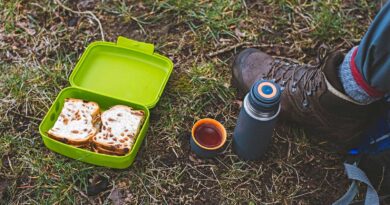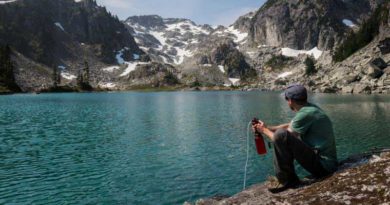How to Keep Gear Dry when Hammock Camping?
Many campers like hammock camping because of its minimalism. However, hammock camping is different from regular camping. As we all know, regular camping has a cozy camp with space to move about. It is more organized with proper storage.
Gear can be stored securely even during rain. But this is not the case in hammock camping. Lack of space means there are limited options to store your gear, which makes it more difficult to keep it dry. Therefore, it is important to understand how to keep your year gear dry in the backcountry while hammock camping.
1. Gear Slings
Gear slings are a great way to store your gear during hammock camping (Metolius Multi-Loop Gear Sling works great). They are like mini hammocks for your gear that can handle a full load of your gear. They can be tied under the hammock or above the hammock. Slings keep your gear above the ground and it is easily accessible while using the protection of the hammock tarp to keep the gear dry.
Gear slings can utilize the protection of the hammock’s tarp or they can be hung in a completely different place where there is proper shelter. Their compact nature makes them a great storage option as they can be packed leaving a lot of space in your backpack for the essentials.
If you are a group on a hammock camping trip, you and your friends can ladder the slings between the same trees and cover them with a single tarp. This reduces the number of lines crisscrossing the campsite.
2. Dry Bags
Dry bags are a simple waterproof storage solution for small and medium-sized items. They are used by kayakers, rafters, and divers so it should give you the peace of mind that your stuff would stay as dry as the dry heat in Arizona. They can easily hold important things that you don’t want to get wet.
With dry bags, you no longer feel the need to put gear under any cover because they can easily be stuffed, rolled, and sealed. Due to their waterproof nature, you can leave them in the rain without having to worry about your gear getting wet.
They can easily be hung on a ridgeline, a tree branch, or outside of a backpack. An additional benefit of dry bags is that instead of packing items in your backpack, dry bags can be used as organizers which can be preloaded with the desired items and then be simply pulled out of the bag and hung up once you reach the campsite. It is great to store small items together instead of going through your backpack for them.
3. Hammock Tarps
When we talk about hammock camping, hammock tarps are, of course, the obvious solution. If you hang the tarp so that it covers the gear storage, you are all set. A second smaller tarp for hanging your gear in a location other than the hammock is very helpful as well.
Gear tarps are smaller and lighter than hammock tarps that keep the gear protected and while giving easy access. Gear can be hung higher to get easy access. An added bonus is if the gear tarp has a central loop for a ridgeline. Gear tarps can also function as groundsheets if you want to lay your gear on the ground under the hammock.
4. Contractor Bags
Contractor bags are thick, 3mm bags that can be used to store gear securely. They work fine for overnight storage. The downside is that access to stuff becomes difficult as everything is cluttered in one place. But once the gear is put into it, the bag can be left on the ground without worrying about the gear getting wet.
They can also be cut down and used as wraps and groundsheets under a tarp. Cutting down the tent into more manageable sizes is also a popular option as it provides you with a lot of versatility. This can make it easier to store different gear into different bags making it relatively easier to get what you want. The large size of the contractor bags can also allow them to be used as ponchos in case you get stuck in some nasty weather.
5. Shade Tents
Shade tents are a clever option to keep the gear dry. These tiny sunshade tents are very lightweight and pop and collapse in seconds to the size of a sleeping sack. They have 3 sided walls along with top and bottom and are perfect for protecting the gear from anything sort of a downpour.
They have a small footprint which allows them to be brought under the hammock for extra protection. Their single-sided makes them especially suitable for storing shoes and footwear at night. There are benefits of carrying these if you consider them.
6. Vestibules
There are special vestibules available on the market that cover hammocks such as GrizBeak by 2QZQ. They are made to provide protection from bad weather and high winds. They can be sealed shut from one or both sides and can be deployed to mimic a complete camp. Also, they provide additional storage to hang gear.
7. Drip Lines
A drip-line is a string or anything that hangs from your straps and ridgeline to direct the water flow onto the ground. They are very helpful while hammock camping in the rain. However, if you use drip lines incorrectly, you will increase the chances of water flowing down from the straps and ridgelines into the hammock making you wet. Make sure that the drip lines are under your tarp or they won’t work. Drip lines are easy to implement so they should be considered.




